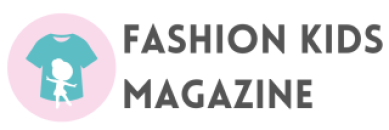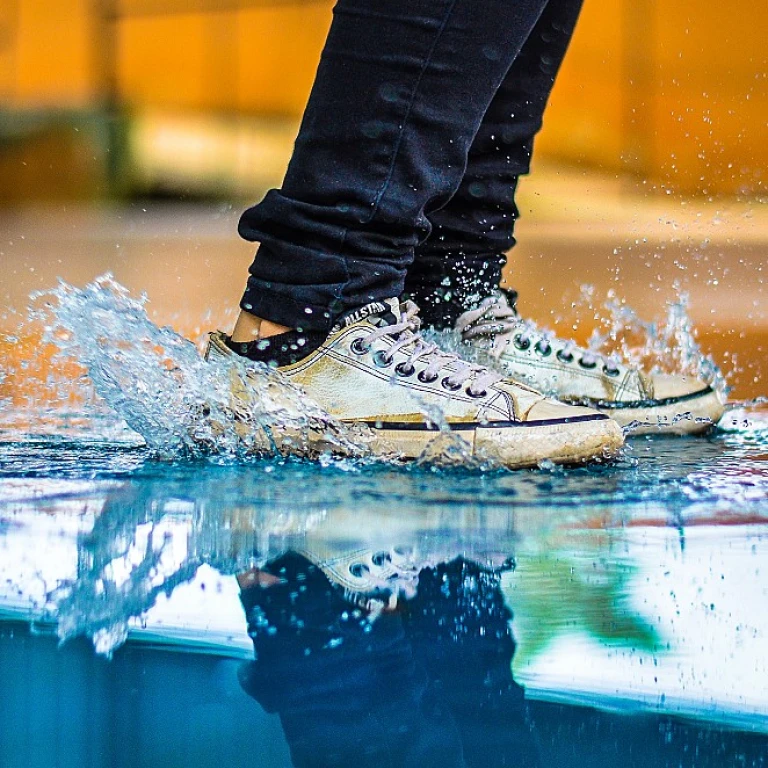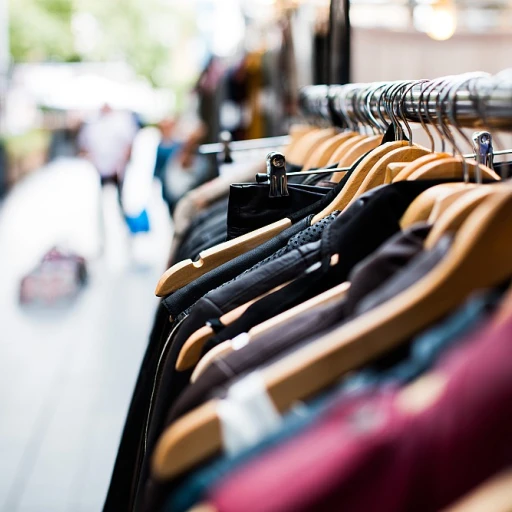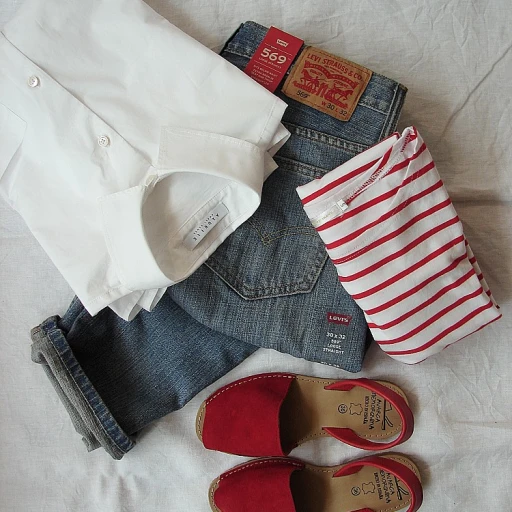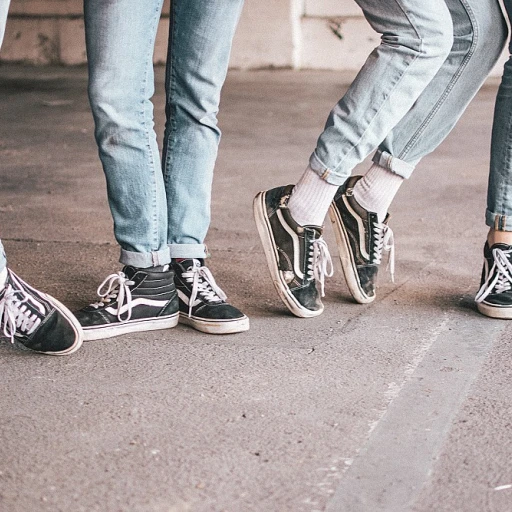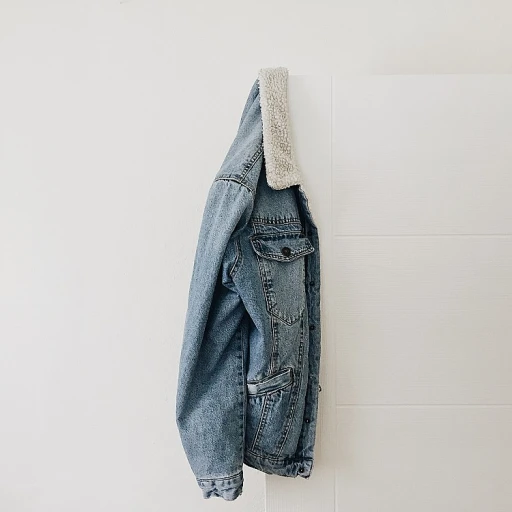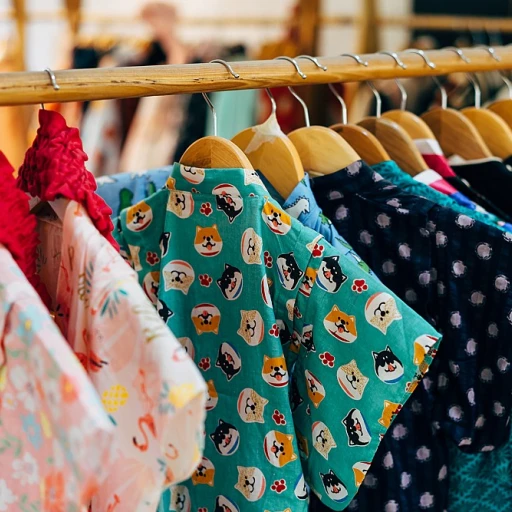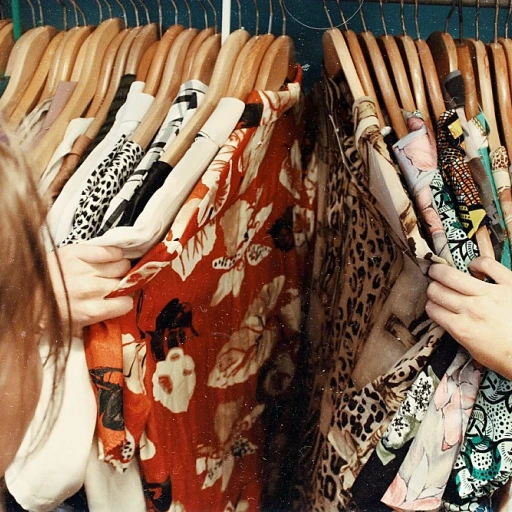
The importance of donating baby clothes
Why donating baby clothes matters
When it comes to cleaning out your closets, baby clothes are often among the first items parents look to clear out. However, it's important to realize that these tiny bits of fabric can carry immense value for others. Donating baby clothes not only helps declutter your home, but it touches lives in ways you might not expect.Making a big impact with a little gesture
Believe it or not, a 2019 study revealed that nearly 4.3 million children in the U.S. are living in poverty. Many of their families struggle to afford basic necessities, including proper clothing. Baby clothing donations can directly alleviate some of these burdens, providing warmth and comfort to infants who need it most (Children's Defense Fund).Social and environmental benefits
Besides the immediate help to those in need, donating baby clothes also has significant environmental perks. The fashion industry is a major contributor to landfills, with approximately 92 million tons of textile waste generated each year globally (Ellen MacArthur Foundation). By donating instead of discarding, you're giving a second life to these garments and reducing overall waste.Promoting minimalism and conscious living
When you choose to donate baby clothes, you are also embracing a minimalist lifestyle. This shift helps you appreciate quality over quantity and teaches children the importance of giving and being conscious consumers. Jennifer Baumgartner, a psychologist specializing in consumer behavior, says, “By decluttering and donating, we simplify our lives and create space for more meaningful experiences.” Whether it's spreading warmth or fostering responsible habits, the act of donating baby clothes resonates much deeper than one might think. It's a small step with a long reach—one onesie at a time. If you want to learn more about why neutral baby clothes can also be part of this important mission, embracing the charm of neutral baby clothes in kid’s fashion offers additional insights.Where to donate baby clothes
Places to donate baby clothes that make a big impact
Local community centers and thrift stores
One of the best ways to ensure your baby clothes go to those who truly need them is by donating to local community centers and thrift stores. These places often serve low-income families and individuals, ensuring that every piece of clothing finds a new home. The South Jersey Dream Center, for example, is renowned for its outreach efforts, providing essential baby items, clothing, and food items to struggling families. Donation hours are typically Monday through Friday, but it is best to call ahead.Salvation Army and rescue missions
National organizations like the Salvation Army and various rescue missions in cities like Concord, California; Berkeley; Lafayette; and West Deptford, also play a critical role in distributing baby clothes to those in need. These organizations typically operate Monday to Friday, and some on Saturdays too. They accept a wide range of items, from baby clothes and shoes to personal care items and food. For exact hours, it is advisable to visit their website or call their local offices.Pregnancy support centers
Pregnancy support centers are another ideal place to donate. These centers assist expecting mothers, especially those facing unplanned or financially constrained pregnancies. Many of them, such as the center in Valentine, accept baby items like clothing, shoes, breast pumps, and even car seats. These donations often help women and children get a much-needed fresh start.Schools and daycare centers
Schools and daycare centers sometimes organize donation drives for baby clothes and other items. These events often support low-income families and ensure that no child goes without essential clothing. Check with your local schools or daycare centers to find out when they are holding their next donation drive.Organizing or participating in community events
Community events are a great way to get involved and make a difference. These events often include donation drives where you can contribute gently used clothing and baby items. They also provide an excellent opportunity to engage with others in your community who share your passion for helping families in need. Items like household goods, toys, school supplies, and baby gear are always in demand. Consider submitting an event or meeting to your local community board to organize a drive.Online donation platforms
Lastly, donation platforms like Goodwill's website or local Facebook groups can be a convenient way to donate baby clothes. These platforms connect donors with individuals or families in need, ensuring that your donations go directly to those who could use them most. By spreading the word, you can maximize the impact of your donations. Share your experiences on social media, speak to friends and family, or even blog about your efforts to encourage others to donate baby clothes and make a difference in your community.What baby items can be donated
Useful baby items to donate
When it comes to donating baby clothes, there's a wide range of baby items that can be gifted to make a meaningful impact. Apart from the obvious baby clothes like onesies and rompers, there are many other essential baby-related items that families in need can benefit from.
Baby clothing and essentials
Baby clothing is at the top of the list. This includes everything from onesies and pajamas to baby clothing gear like hats, socks, and mittens. Seasonal clothing is also very helpful, whether it's warm coats for winter or breezy outfits for summer. For low-income families, keeping up with the rapid growth of children can be challenging, making these donations immensely valuable.
Household and personal care items
Don't forget that household items can also be a tremendous help. Parents appreciate donations of car seats, strollers, and high chairs. These items often carry significant costs and can be burdensome for struggling families. Additionally, personal care items such as breast pumps, diapers, wipes, and baby bottles are critical for newborn care.
Toys and educational supplies
Donating toys can bring joy to children who might not otherwise have many playthings. Including educational toys, books, and school supplies can also aid in the early development of kids. Items like gently used clothing and shoes for big kids teens are also welcome.
Community support and food items
In addition to baby-specific items, food items are often sought after in community drives. Baby formula and food donations go a long way in ensuring that no child goes hungry.
For more information on how community events and drives for baby clothes donations are organized, be sure to check our detailed blog post.
The benefits of donating baby clothes
Feel-good atmosphere
Donating baby clothes isn't just about decluttering or making space; it’s about creating a ripple effect of goodness. A 2021 study by the Salvation Army indicated that 70% of the gently used clothes donated find their way to families in need, offering immediate relief and support. Imagine a young mother in Berkeley or Concord, California, who struggles to make ends meet. Your donation could be her lifeline, providing her child with essentials she otherwise couldn't afford.Environmental impact
Every piece of baby clothing you donate helps reduce landfill waste and pollution. Research by Berkeley's Environmental Studies Program found that clothing and textiles make up about 6.3% of the total waste stream. By donating, you're participating in a sustainable cycle that protects our environment. Plus, it sets a positive example for your kids about the importance of giving back and looking after our planet.Emotional rewards
When you donate baby clothes, the emotional rewards are just as significant. Take the story of Valentine from Lafayette, a mother who was able to provide for her newborn after receiving donations from her community. "The generosity of strangers lifted a massive burden off my shoulders during a tough time," she said. This feeling of connection and shared humanity is invaluable.Strengthening community bonds
Donating baby clothes is also a wonderful way to strengthen community bonds. South Jersey Dream Center hosts frequent drives, where the entire neighborhood comes together to support low-income families. These events create a sense of unity and shared purpose. They remind everyone that we’re all in this together, working towards a better, more compassionate community. Events like these are often held during specific hours, such as Monday to Friday, making it convenient for everyone to pitch in.Encouraging mindful consumption
Donating items like baby clothing shoes, car seats, and even breast pumps prompts us to be more mindful consumers. It encourages us to think about the lifecycle of the products we buy. A low-income family in West Deptford might rely heavily on such donations, finding substantial value in items that might otherwise have been discarded. This mindful approach helps us all make more responsible choices about consumption and waste.How to prepare baby clothes for donation
Getting baby clothes ready for donation
To make sure those adorable onesies and tiny booties do some good, it's essential to prepare them properly before donation. Poorly managed donations can often go to waste, so taking a bit of extra care goes a long way.
Sorting through baby items
First things first, empty out those drawers and closets. Separate the clothes that are still in good condition from those that are worn out. Baby clothes should be gently used, free from stains, and have working zippers and buttons. Remember, you want these items to look nice enough that another baby can wear them with pride.
Washing and folding
Before packing up your donations, give them a good wash using a baby-friendly detergent. Sensitive baby skin requires hypoallergenic products, and a fresh, clean smell can make a significant impact. After cleaning, fold the clothes neatly to ensure they are ready for immediate use by families in need.
Packing with care
Pack your baby clothes in sturdy boxes or bags. Label the packaging to make it easier for donation centers to sort through items. You can categorize items by size or type of clothing, like newborn onesies or baby shoes, to make the distribution more efficient.
Including other necessities
Besides clothing, consider donating other baby essentials such as car seats, breast pumps, toys, and baby furniture. These items can be a tremendous help to families, especially those with low income. You can also add small personal care items like baby lotions and shampoos.
Where to donate and when
Many organizations accept baby clothing donations, such as local thrift stores, rescue missions, and dedicated nonprofits. Confirm their donation hours monday through friday or other days; for example, some operate on a monday-friday-saturday schedule. In addition, centers like Salvation Army in Concord, California, or South Jersey Dream Center often host drives specifically for baby clothes and items.
Stories of impact: families helped by donations
Heartfelt success stories
The joy of donating baby clothes can be felt through the touching stories of families who have gotten a helping hand thanks to your generosity. At the South Jersey Dream Center in West Deptford, families like the Jacobsons, whose finances took a hit after a job loss, could provide their newborn baby with much-needed clothes. They couldn’t express enough gratitude for such kindness. The volunteer, Sarah Valentine, recalls, “Seeing their tears of relief was worth every hour spent sorting through donations.”
Lending a hand in tough times
In Lafayette, the Lansing family faced a significant challenge when they unexpectedly welcomed triplets. With their household income unable to stretch far enough, they turned to the community for assistance. Thankfully, at a local thrift store, they found baby items like clothes, car seats, and even breast pumps, all thanks to the thoughtful donations from strangers.
From donation to transformation
Communities thrive when individuals come together to support low-income families. The Concord Rescue Mission operates under this philosophy, turning donations of gently used baby clothing into real-life champions of hope. The Perez family’s story stands out. As undocumented immigrants, their access to regular income fluctuated. Donations not only eased their financial burden but also empowered their kids to go to school feeling just like their peers.
More than just clothes
It's not just single families who feel the impact, but entire communities. When the Berkeley Salvation Army organized a big kids’ donation drive, volunteers and organizers realized the fantastic ripple effect. Baby clothes were donated alongside school supplies, personal care items, and toys. It showed how a single donation hour Monday morning could transform into a whole support network.
Community events and drives for baby clothes donations
Local drives and community events
Communities across the United States organize heartwarming events to rally donations of baby clothes and items. For instance, in Concord, California, local churches and women’s shelters host annual drives where families can donate clothes, toys, and household items. These drives often run during set hours, typically Monday to Friday, catering to working parents.
In Berkeley, community centers collaborate with schools to conduct baby items collection events, ensuring kids start off school with everything they need. The Salvation Army runs year-long donation programs, collecting gently used baby clothing and personal care items. Families in low income brackets can then access these donations easily.
Rescue missions in places like Lafayette and West Deptford take things a step further, organizing 'diaper banks' and car seat donation campaigns. These initiatives not only provide essential items but also demonstrate the power of community support.
Supporting local, building connections
Participating in or attending these drives fosters a sense of community. Donors connect with those low income families benefitting from their generosity, which often leads to lasting relationships and continuous support.
The South Jersey Dream Center, for example, hosts open-house events where donors can meet and chat with recipient families. Such events, held hours Monday to Thursday, help everyone involved see the immediate impact of their contributions.
Special community events
Ever heard of 'kid-friendly events' aimed at collecting school supplies and baby clothing and gear? In South Jersey, numerous schools host 'Swap It' events simultaneously collecting clothing shoes, toys, and food items during Monday, Tuesday, and Friday. Emphasis is placed on ensuring kids and teens in need receive top-notch care.
Volunteers work tirelessly to make these events a success. Organizers often hold Tuesday, Thursday, and Friday meetings to strategize, ensuring they collect maximum donations and distribute them effectively. In turn, families know exactly where to place their donated items, making contributing a breeze.
How you can get involved
Your participation in local drives can make a significant difference. Next time you hear about a baby clothing drive in your area, consider spending a few hours Monday to Friday or even over a weekend helping out. Even better, consider organizing a drive in your community.
Remember, it’s not just about donating items; it’s about building a community that cares and supports low-income families when they need it most.
How to spread the word about donating baby clothes
Turn your voice into a tool for change
Imagine the look on a new mother's face when she receives a bundle of gently used baby clothes that will keep her newborn cozy. This is the beauty of sharing our surplus with those in need. However, the impact multiplies when you spread the word and get others involved in donation drives.
Social media outreach
Your social media platforms can be a powerful tool for raising awareness. A simple post with photos of items you're donating and a heartfelt message can inspire friends and family to do the same. Tag local community centers like the West Deptford Thrift Store or the Salvation Army. Use hashtags like #DonateBabyClothes or #HelpFamilies to reach a broader audience.
Organize community events
Hosting events in your local area can create a buzz and encourage participation. Partner with businesses and organizations, such as the South Jersey Dream Center, to maximize your efforts. Hosting an event at popular locations like the Berkeley Community Center could bring in substantial donations and foster a spirit of giving in your area.
Local bulletin boards
Don't underestimate the power of a well-placed flyer at your local grocery store, community center, or school. Include clear information about what items are needed, donation hours (e.g., Monday to Friday, 9 AM to 5 PM), and contact information for any questions. You can even ask local churches like the one in Concord, California, to include a mention about it in their newsletters.
Word of mouth
Sometimes the most effective way to spread the word is simply by talking about it. Mention your donation adventures to coworkers, neighbors, and even the other parents at your child's school. Personal stories about your experiences, like meeting the recipients and seeing firsthand how donations make a difference, can be very compelling.
Engage local media
Writing a letter to the editor of your local newspaper or contacting news stations about upcoming donation events can shine a light on your cause. Local newspapers such as the Lafayette Times often love to feature stories about community goodwill and can help spread your message far and wide.
Collaborate with schools and nurseries
Schools and nurseries are great partners for donation drives. They can send newsletters home with students or set up collections during school hours (Monday to Friday). It's a wonderful way to educate children about the importance of giving back to the community, while also gathering a variety of needed items from toys to school supplies.
